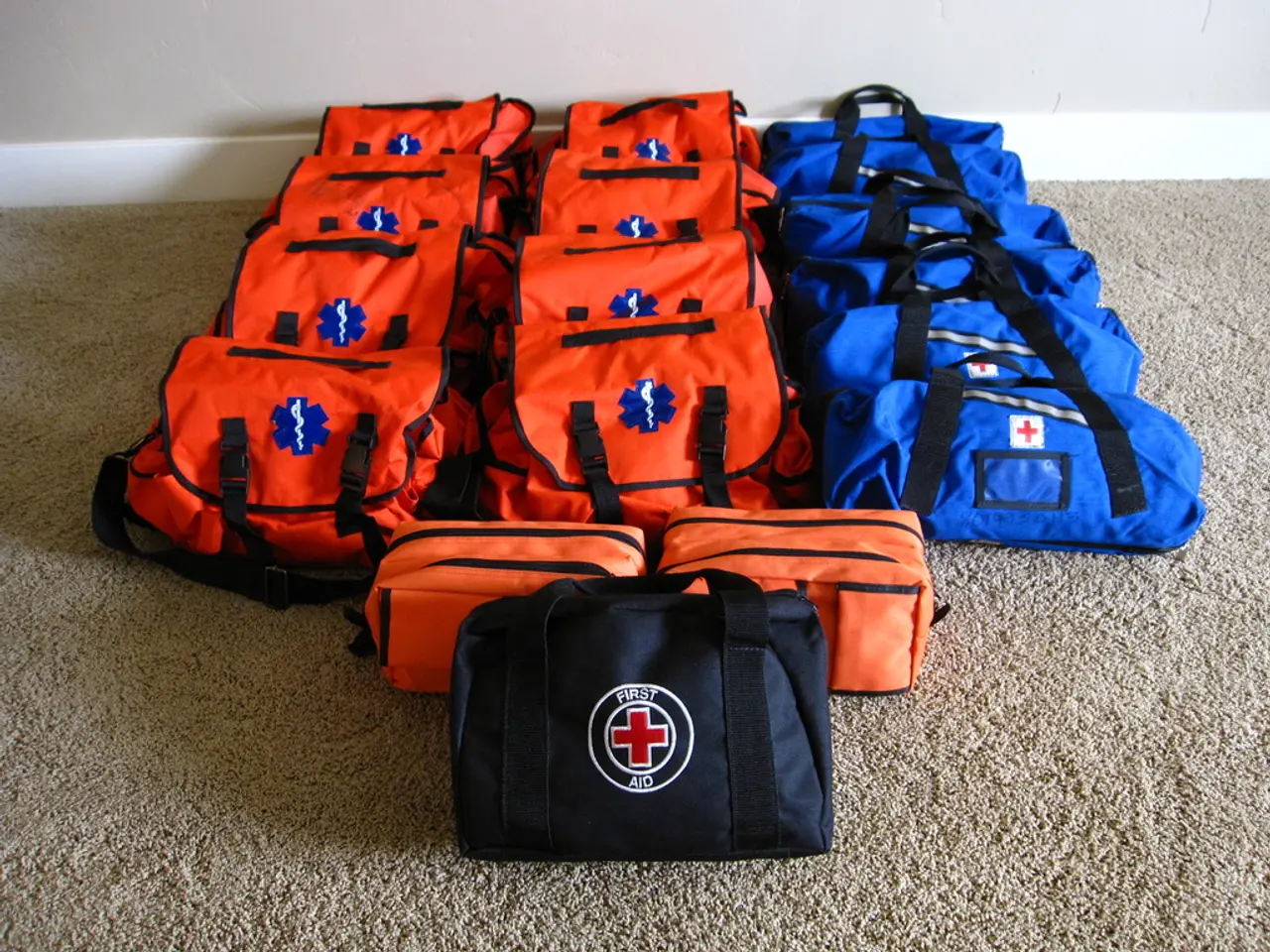Essential Items for Your First-Aid Kit in Preparedness for Medical Crises
In the event of a medical emergency, having a well-stocked first aid kit can be crucial. Here's a list of items that are typically included in a comprehensive first aid kit, based on available information.
Firstly, it's important to have a variety of adhesive bandages in different sizes, sterile gauze pads, and adhesive tape for wound care. Antiseptic wipes and antibiotic ointment are also essential for cleaning and treating wounds.
Scissors and tweezers are useful tools for cutting bandages and removing imbedded foreign objects like splinters or glass. Disposable gloves are a hygienic necessity when treating injuries.
Pain relievers such as ibuprofen or acetaminophen can help manage pain in minor injuries. A CPR face shield or mask is important for safety during cardiopulmonary resuscitation (CPR).
Instant cold packs can be used for swelling and heat-related injuries. A digital thermometer can help monitor increases in temperature, which can be a sign of infection.
Elastic bandages are useful for supporting injuries and providing compression. A first aid manual or instructions can provide guidance in administering first aid.
A breathing barrier CPR kit can potentially help with restricted airways. A list of items to keep prepared for a medical-related emergency has been provided.
A variety of dressings and gauze are important for all kinds of wounds. Cloth silk tape and a cohesive roll can be used for wrapping bandages.
A bleeding control kit can help minimize blood loss during an emergency. Single-use triple antibiotic packets can be used for a variety of injuries.
Remember, none of the listed items should be considered complete substitutes for the care of a medical professional. Antihistamines can be used for minor allergic reactions, but only if approved by a doctor.
Familiarizing oneself with the difference between ER, urgent care, and home care for injuries is important. Serious circumstances such as chest pain, shortness of breath, significant falls, motor crashes, and other potentially high-risk situations warrant a trip to the ER.
Upper-respiratory infections with cold-like symptoms, when free from a notable fever, can be handled at home or in urgent care if the condition persists. Medical emergencies can happen unexpectedly, so it's always better to be prepared.
While this list provides a good starting point, it's always recommended to check directly on reliable medical sources like HuffPost for the specific list from Tessa Flores’s article on this topic.
Incorporating science and health-and-wellness practices, a well-stocked first aid kit should include various dressings, gauze, and single-use triple antibiotic packets for different types of wounds. For managing pain, one can find over-the-counter pain relievers like ibuprofen or acetaminophen; however, it's essential to seek medical advice before administering them.






